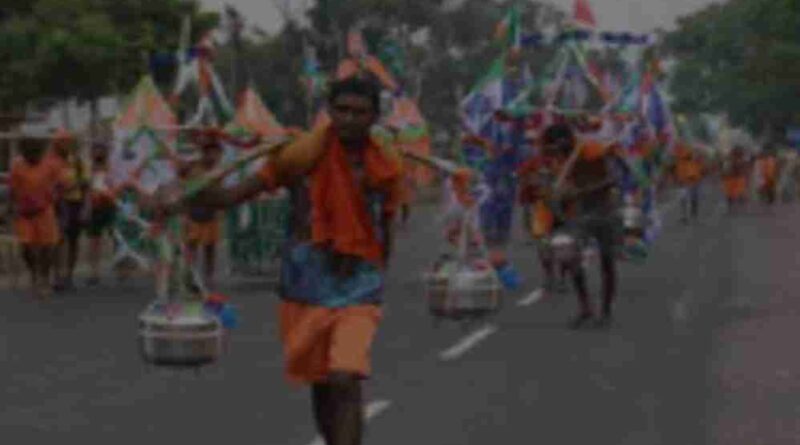Uttar Pradesh Tightens Security for Kanwar Yatra: Over 50,000 Personnel Deployed Amid High-Tech Surveillance
As the sacred Kanwar Yatra picks up momentum across northern India, Uttar Pradesh has stepped into high-alert mode, rolling out one of its most robust security deployments in recent years. With lakhs of devotees trekking across the state, often barefoot and carrying holy Ganga water to offer at Lord Shiva temples, authorities are leaving no stone unturned to ensure their safety.
This year, over 50,000 security personnel have been stationed along the Kanwar route—an impressive show of preparedness aimed at both crowd control and incident prevention. The state administration has also adopted a modern approach, integrating advanced surveillance tools like high-definition CCTV cameras and drone monitoring into the security setup.
A Spiritual Journey Under Watchful Eyes
The Kanwar Yatra, which spans several days leading up to Shivratri, sees a massive influx of devotees, also known as Kanwariyas, from states like Uttarakhand, Delhi, Bihar, Rajasthan, and especially across all parts of Uttar Pradesh. The pilgrimage is a deeply emotional and spiritual experience, marked by discipline, chanting, and unwavering devotion. However, with growing numbers each year, the risks of stampedes, accidents, and communal tensions have increased.
To manage this, the administration has not only increased manpower but also leaned heavily into real-time surveillance. Thousands of CCTV cameras have been installed across key junctions, pilgrimage hotspots, rest points, and Shiv temples. These are being monitored round-the-clock from dedicated control rooms set up in major districts.
In addition, drones are now being used for aerial surveillance, particularly in areas that see dense congregations or have previously reported disturbances. These flying sentinels are helping officials spot overcrowding or suspicious activity well before it turns into a crisis.
Zones, Barricades, and Emergency Protocols
Routes have been clearly marked and divided into sensitive, highly sensitive, and normal zones, based on previous years’ data and potential threat assessments. Every district en route has been directed to maintain round-the-clock vigilance. Multi-tier barricading, traffic diversions, and temporary checkposts are now common sights along highways and arterial roads.
Mobile medical teams, fire services, and disaster response units have also been put on standby, particularly in districts with heavy footfall. Authorities are working in coordination with religious groups, local volunteers, and even Kanwariya unions to ensure communication and cooperation remain fluid.
Community Support and Technology Working Together
One of the standout features this year has been the blend of tradition and technology. While the devotion of Kanwariyas remains timeless, the way the state manages the event has seen a definitive upgrade. Integrated control rooms are now using artificial intelligence to detect crowd density and send alerts when footfall crosses safe thresholds.
On the ground, local police are also using bodycams, and commandos have been deployed in certain hyper-sensitive zones, ready to respond at a moment’s notice. For areas that have witnessed communal tensions in the past, officials have conducted peace meetings and sensitization drives ahead of time.
A Message of Harmony and Safety
In a press briefing, senior state officials emphasized that the aim is not only to safeguard lives but also to preserve the sanctity and peaceful spirit of the Yatra. “This is not just a pilgrimage, it’s a collective movement of faith. Our job is to make sure that it’s safe, smooth, and spiritually fulfilling for every devotee,” said one top police officer overseeing the operations.
Kanwar camps along the route have been inspected and provided with essential services including clean drinking water, electricity, and sanitation. Special focus has also been given to female devotees, with female officers and help desks deployed at major locations.
As Uttar Pradesh braces itself for the peak days of the Yatra, there’s a quiet confidence among both officials and devotees. Faith is running high—and so is vigilance. This year’s approach seems to mark a new chapter in how ancient traditions can coexist with modern-day governance, all in the spirit of unity and devotion.
Disclaimer
The information and content shared on digitalgithub.com — including articles, blogs, news, guides, and other resources — is intended for general informational and educational purposes only. We do not guarantee the completeness, reliability, or suitability of any information. Always seek the guidance of a qualified professional before making decisions based on the information you read. Use this site at your own risk.

